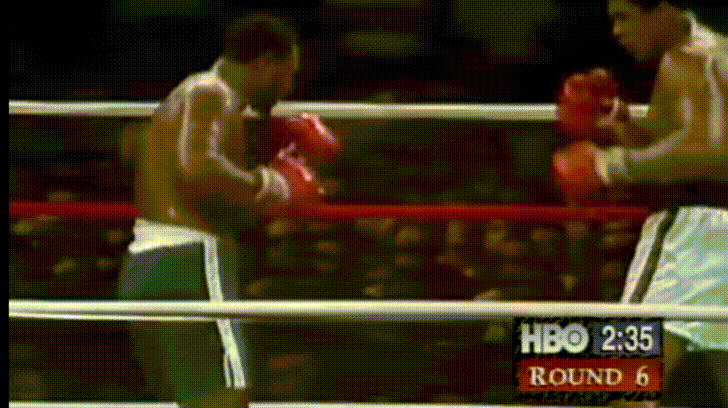To hide your offensive intentions and make you a difficult target, you can’t rely on just your footwork. It is critical to have your upper body slippery and challenging to hit. You need to learn how to merge upper body movements with footwork drills to make this concept a reality.
It’s either a long rhythm or a short rhythm when it comes to upper-body mobility. You’ll likely prefer one over the other depending on your body composition and fighting style, but they both can benefit different types of fights. Before dealing with the two styles, remember these rules.
- Movements are one head width, whether they’re slow or fast. The more movement you make, the more likely you will lose your guard position.
- Keep your upper body moving to keep your offensive probes hard to read and reduce target acquisition.
- Move with your hands. Leaving the hands stationary while moving the head is a common mistake that makes the head easy to hit.
Long rhythm: Usually performed on the outside range. This rocking motion involves the upper body going back and forth.

Short rhythm: As you move inside, you perform a side-to-side movement. Joe Frazier is an excellent example of this.

Learn more: The Boxing Defense Guide: How-tos, Terms & Equipment
Waving and bobbing – The right way
Defending against an incoming punch by bobbing and weaving involves moving the head underneath and laterally. In response to the opponent’s punch, the fighter bends the legs quickly while shifting his body slightly left or right.
A boxer executing a bob and weave to frustrate and escape from his opponent is one of the best things to watch. Despite your desire to protect yourself with this flashy method, it is better to stay away from it.
Bobbling and weaving are easy targets for uppercuts, hooks, and overhands, as well as a waste of time and energy. Instead, you should develop slipping, feinting, and sidestepping footwork as much as possible. At least work it with a minimum of effort and movement if you cannot abandon this mode of upper bodywork.
Below are some drills that will help you learn how to bob and weave.
- Place your trainer’s lead hand on your lead shoulder while you are on your guard. As his hand rests on your shoulder, start bobbing and weaving several times, making sure to clear his forearm each time.
- Try slow-motion punches from your partner once you feel comfortable. You’re supposed to try to keep bobbing and weaving with a conscientious economy.
Step-by-step instructions to make sure your shoulders are up, your chin is tucked, your posture is strong, and you aren’t overreacting to punches when doing bob and weave drills.
